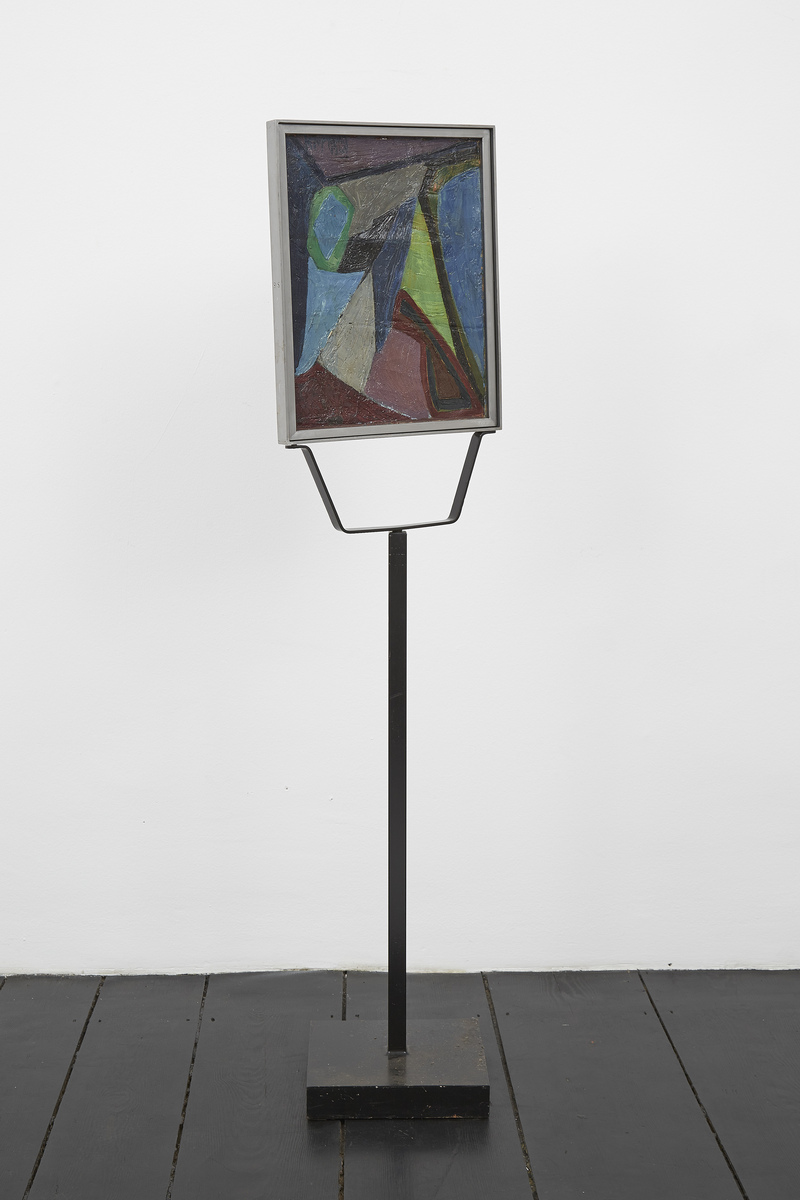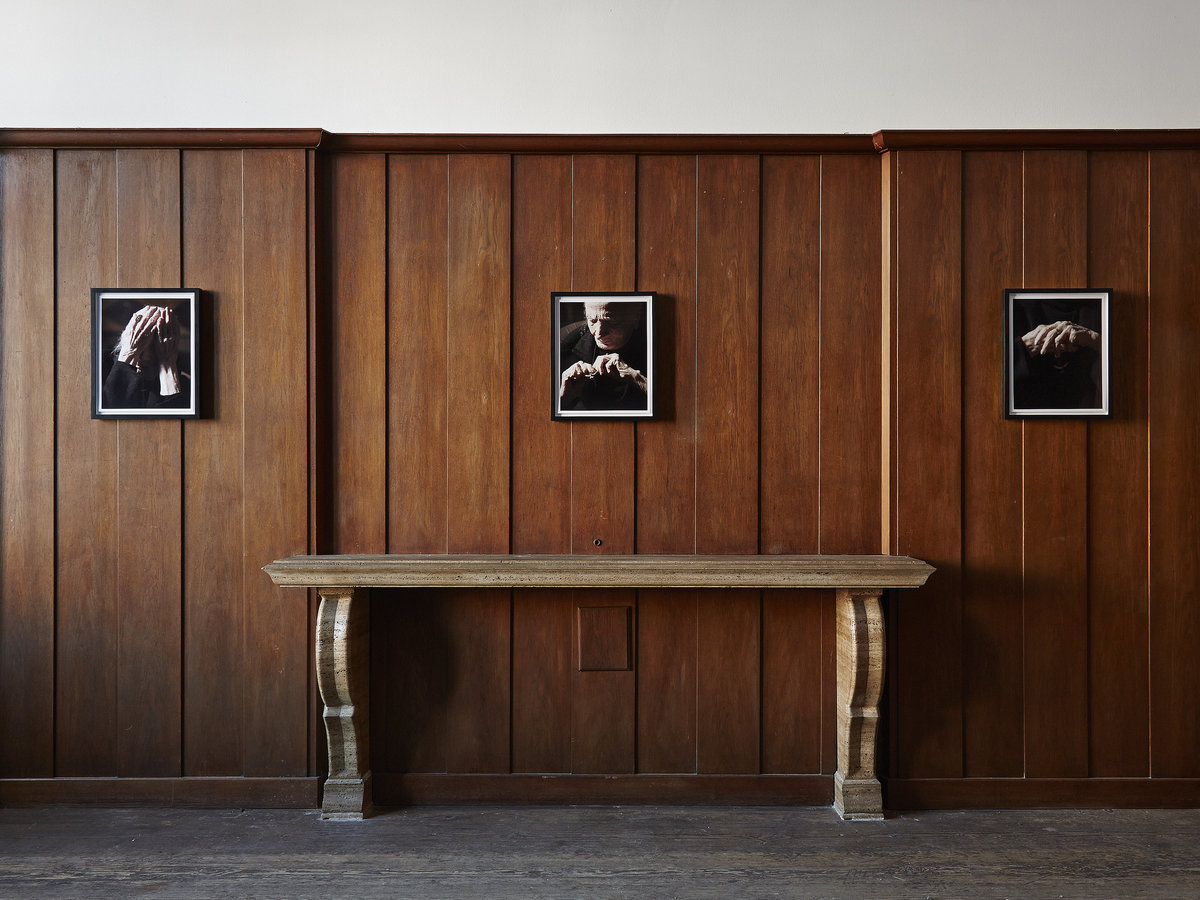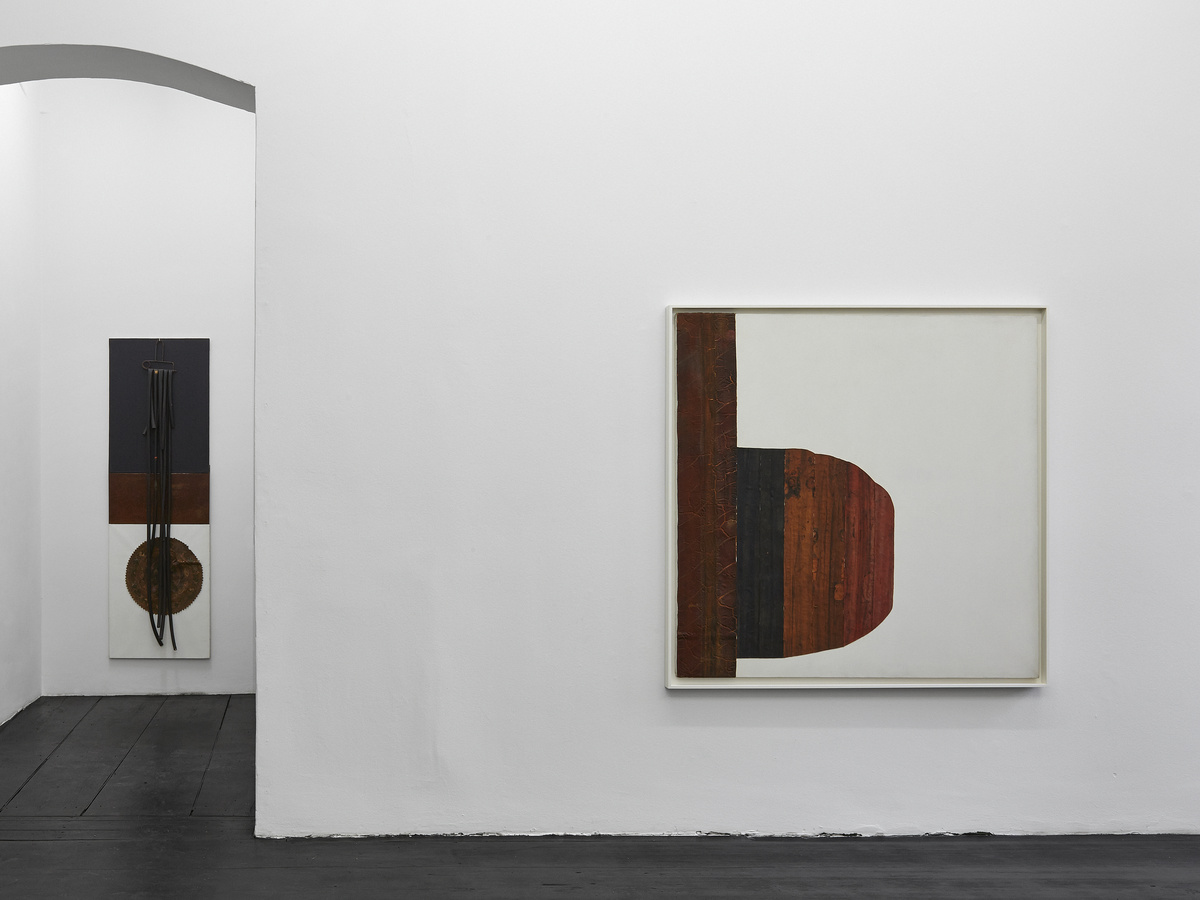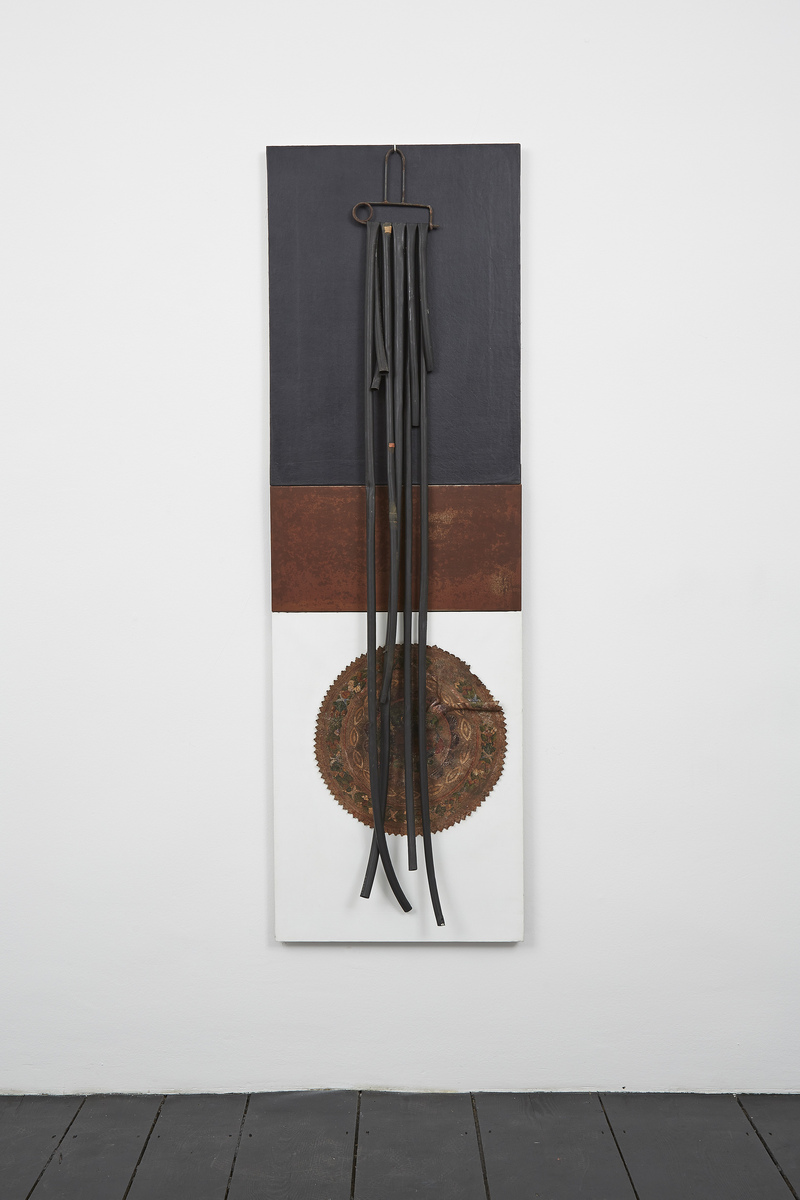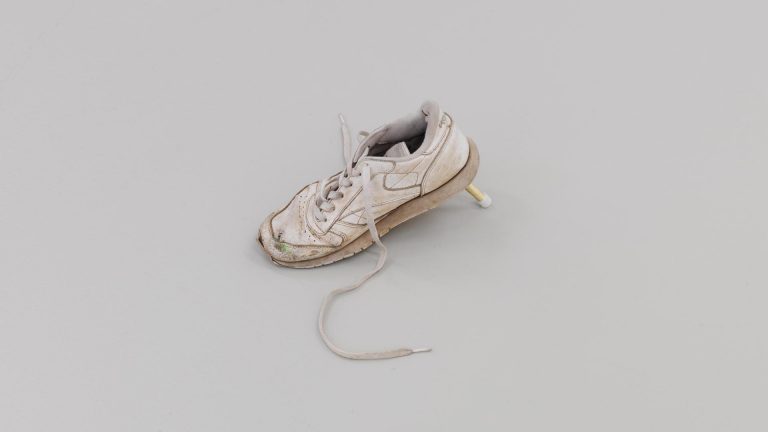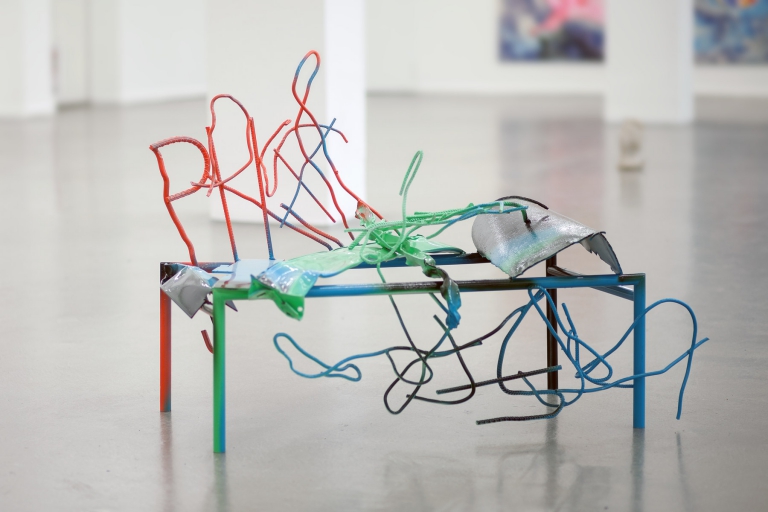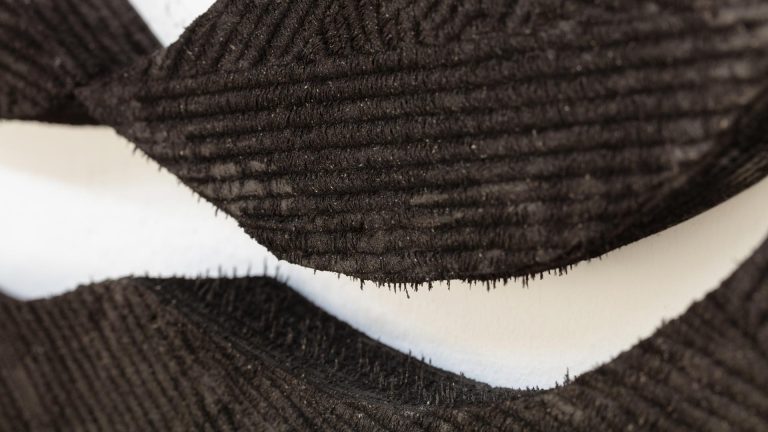Artist: Carol Rama
Exhibition title: Ferite Della Memoria – Selected Works
Venue: Isabella Bortolozzi, Berlin, Germany
Date: January 26 – March 5, 2016
Photography: Henry Trumble, images copyright and courtesy the artist and Isabella Bortolozzi, Berlin
Hell Hound on My Trail *
by Maurizio Cattelan
Maurizio Cattelan: When did you realize that you were an artist?
Carol Rama: We are all artists at birth. It’s just that some people decide to be one.
MC: So when did you decide to be an artist?
CR: I was about fifteen. Every problem was a source of inspiration. Instead of being like other women, and being a gossip or a pain in the neck, I used to draw. I was incredibly lucky.
MC: I found being an artist a lot more difficult than what I had anticipated. All the hard work, the pressure…
CR: Believe me, it’s easier to be an artist than a housewife. Housewives don’t sleep until 2AM, they don’t look younger than their age, and they don’t earn as much money as I do. When I was growing up, a person who painted like I did could be free. I could have been a lesbian, a slut, and still be able to say things other women couldn’t. They couldn’t even dream of it.
MC: There must have been a lot of peer pressure from your family and friends though. You’ve got to settle, get married…
CR: I’m married to painting.
MC: Doesn’t that make you feel alone at times?
CR: I think that being alone is one of the best things in life. It’s wonderful – thinking, studying, dreaming, and whipping up people’s enthusiasm, always on my own. It’s fantastic.
MC: So you’re married to painting. And like every successful marriage, you dedicated all your life to it. You gave a lot to painting. But what did you get out of it?
CR: Let me put it this way. We all have a tropical disease inside us for which we seek a remedy. My remedy is painting. I paint first and foremost to heal myself. Occasionally if the people watching are on my same wavelength, they can be healed as well.
MC: This is actually one of your most celebrated quotes – I paint to heal. What are you exactly healing from?
CR: When I talk about healing, I talk about venial healing for fornicating in a world of fear without limits.
When you have no limits, you can get punished for everything.
MC: You certainly know something about it. One of the most incredible stories I have heard about you is when the police shut down your first exhibition at Galleria Faber in Turin in 1945. It must have been a scary moment. Did you feel like your career was over even before it begun?
CR: No, not really. I think it’s important to have a criminal side to us. We are all subjects to it because we are no angels.
MC: But what have you done that was so bad?
CR: Let’s just say that I always loved situations and objects that are rejected. I’ve always been curious for erotic reasons. I love fetishes. Eroticism. Sex.
MC: What is it about eroticism that interests you?
CR: Eroticism for me is the rejection of any prudery. It’s about sensuousness, the relationship with your senses, with the body. It’s about the body being scrutinised and dissected in its anatomical parts, in all its bits and functions.
MC: What’s your favourite body part?
CR: The tongue.
MC: What do you like about it?
CR: I like it best because it never ages.
MC: You know what else they say about the tongue? That it can be the most vicious weapon. It can hurt more than anything else.
CR: It’s true. You know, I always thought women are more intelligent than men. They are incredibly sharp. But they can be bitchier to other women. When they find out that another woman is cleverer or more intriguing, they panic. And they gossip.
MC: You don’t think men can gossip too?
CR: Men have other problems. They are very delicate but they have to look tough, and they get depressed. They have to be socially popular in order to appreciate themselves.
MC: Speaking of popularity, I’m always perplexed when I see artists getting acknowledged only in their late years. Why do you think it happens?
CR: In my case I think it’s because people don’t like me at the beginning, but I have good qualities, and they get acknowledged with time.
MC: Do you think your work has changed over the years?
CR: Not really. I work now the way I did at fourteen. The same way. I’ve got a bit more skill, a bit more experience, but I’m just the same. I haven’t changed.
MC: Who were your principal reference points when you started?
CR: I always escaped references and referents. There is an aspect of contemporary art that I consider as an untreatable illness – the practice of emulation and evocation. I always hated this. I see regularly very few artists. Maybe the fear of not fitting the art world has increased with age. I have a dialogue with a limited number of them.
MC: You met a lot of amazing people in your life though. Pier Paolo Pasolini, Man Ray, Andy Warhol…
CR: Ah, yes. Pasolini was a handsome, intelligent, fascinating man. Yet he was afraid of dying young.
MC: And Warhol?
CR: Warhol was smart. He was extraordinarily intelligent. He wasn’t an easy person. He was complicated, elusive.
MC: Who was your best friend?
CR: My best friend was Edoardo Sanguineti. The freest and most erudite man I know.
MC: What made him free?
CR: Erudition. You’re free only if you’re cultured; otherwise you’re tied to your family and the people who love you.
MC: Do you remember when you first met?
CR: In 1946. I owe him a lot. Regrettably what happens is that I’m always afraid of disappointing people that like me.
MC: I think we all are, to a certain extent.
CR: That’s true. Man Ray for example was shy at heart, and this tormented him. He was afraid no one would ever like him, and since I felt the same way, I loved him in my own way.
MC: It seems to me everybody loves you, Carol. Everybody keeps saying how intelligent you are, how beautiful you are…
CR: They’re saying it now darling, because I’m getting old, and an old person doesn’t cause trouble anymore, doesn’t stir jealousies. But I’m ugly. It doesn’t matter though. Being judged on looks always made me feel awkward. When I work, I consider individuals and their qualities, and I add others. Defects, as I see it, don’t exist. They’re an invention of society, an invention of cruel people. You see, beauty is a very important thing, but beauty is something that makes women suffer.
MC: I know. Men too, these days.
CR: Which is alright, as it is a way to confront oneself, but if that is the only sphere in which you measure yourself, what prospect of old age do you have? It’s better to commit suicide.
MC: Are you afraid of dying?
CR: I’m scared like anybody else. You can be fearless only until you’re 20. Only morons are fearless after that. (laughs)
MC: (laughs) Tell me about it – I was scared even before that! Earlier on you said that problems were a source of inspiration when you started. How about now?
CR: I don’t need them anymore. Just give me a face to look at and I have material to go on for 20 years.
MC: So you don’t think that pain is necessary to create, that you have to be living in hell or going through some sort of crisis to be productive?
CR: No. When I paint I have no rules. Are you living in hell? Well, try to make the most of it, even there.
* Rearranged interview made by the author with original quotations from Carol Rama, Turin, June 2014.

